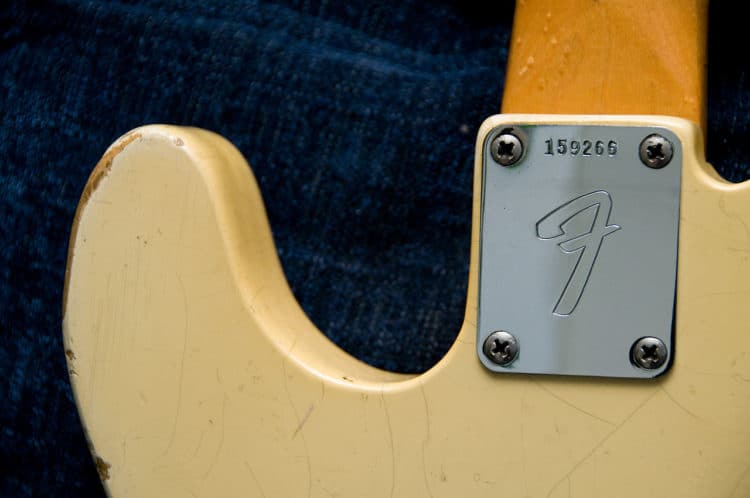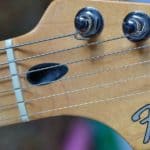The way a guitar’s neck is attached to its body is not something you should take lightly.
You see, how these 2 pieces interact will have a big effect on how the whole instrument resonates and sounds.
Many players have strong preferences about the kind of construction they like the most for their guitars.
But do guitar neck joints actually affect tone? Here is a short answer:
Guitar neck joints as every other component or construction feature of a guitar have a significant effect on tone. But rather than the type of joint, the most important aspect in the determination of sound is how good the fit is. The tighter the contact between neck and body the more resonance and sustain.
In this article, for those who want to dive deeper, I will talk about their effect on tone and playability in more detail.
After that, I will list and describe the most common types of neck joints, and answer some frequent questions about them.
Finally, I will give you my conclusions and recommendations about how you should approach the decision of getting a new guitar in relation to its neck joint.
Are you ready to get started?
Let’s go!
Does the neck joint affect a guitar’s tone?
Guitars are very complex systems where many factors have an input on the final tone.
Perhaps, one of the most important variables that define sound is the construction type of the instrument, and particularly its neck joint.
You see, a neck joint makes or breaks the interaction between the neck tonewoods and those that comprise the body of the instrument.
Fit is extremely important, and I will argue it’s even more important than the type of joint itself.
To be extra specific, by fit I mean the clear surface of contact the body and the neck happen to share at the joint.
The perfect guitar would have an extra tight fit that maximizes the transmission of resonance between both crucial parts it connects.
On the other side, a poorly manufactured instrument will have gaps and pockets where the woods don’t meet at all, or, in a better scenario, do it just partially.
To round up my point: The neck joint does have a very important effect on a guitar’s tone, but I would argue that its fit is more is way more important than its type.
Obviously, neck-through instruments are off the question here since there’s actually no joint happening there.
But more on that later.
How much does the neck joint affect tone?
Quantifying how much a certain part or aspect of a guitar has to contribute to its final tone is borderline impossible.
However, there is common consensus and shared thoughts among the community that point towards a rather homogeneous direction.
Neck joints clearly have an influence over sustain and resonance. This is ground truth since without the neck joint there wouldn’t be any possible transmission of vibrations from the neck to the body and both would be isolated components.
How big is the effect on sustain and resonance is where I couldn’t make any guesses, however, I can say that the tighter the bond between neck and body, the smaller would be the loss in both these aspects of tone.
The effect on the “EQ” of the instrument is greatly debated and many opinions are claimed to be biased by the impossibility of isolating the effect of the neck joint alone.
Many players claim that bolt-on necks are brighter, while set necks are warmer, but this might just be a proxy for Stratocasters being more treble friendly and Les Pauls stronger on the low department overall and not a cause of their joint construction.
Most common neck joints and their effect on tone
There are 3 most common neck joints and each of them is very different from the other. This, of course, leads to a lot of fans and detractors to every single one of them.
My opinion, however, is that there’s no neck joint better than the other and each one serves different kinds of instruments in its own way.
I would probably not like a strat with a set neck, nor a Les Paul with a bolt-on neck.
But on second thought, maybe those would be nice construction experiments to test.
Bolt-on

Bolt-on neck joints, as its name implies are held together by bolts. These are screwed into the guitar body and in many cases hold in place by a metal plate.
This neck joint was made popular by Fender and even at that time was looked down on by purists as a cheaper alternative to the more refined ways of building musical instruments.
The truth is that nowadays this is just a style of neck joint and is not considered as lower quality than any other one.
In terms of tone, bolt-on necks are usually perceived as brighter, but this might be a bias born from its common utilization in Fender instruments.
Also, many players claim that they lack sustain since their fit could not ever be as tight as with other construction types.
I found this study proving the opposite, however.
Set neck
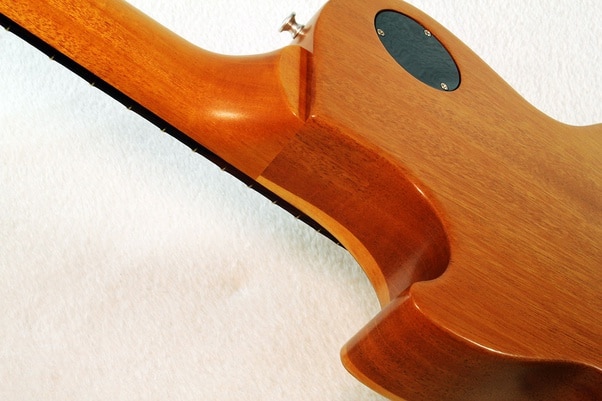
Set neck joints were the industry standard for electric guitars years before Fender. This construction type is a more traditional joint, where the neck meets the body in a carved-out pocket and they are held together with glue.
This kind of union allows for the manufacturers to shape and finish the back of it in many different ways.
Some players claim that set necks are more comfortable to play and allow for a better reach of the upper frets. This, as with many other things, is just a matter of taste.
Usually, set neck instruments are more expensive because they require more specialized wood labor, and take more time to be finished.
You need to fit the pocket perfectly, apply the correct amount of glue, and then let it dry.
In terms of tone, set necks are usually perceived as warmer, but this might be a bias born from its common utilization in Gibson instruments.
Many players will argue that this type of construction allows for a better fit between neck and body thus providing better resonance and sustain. However, the study linked above shows the opposite.
Set through
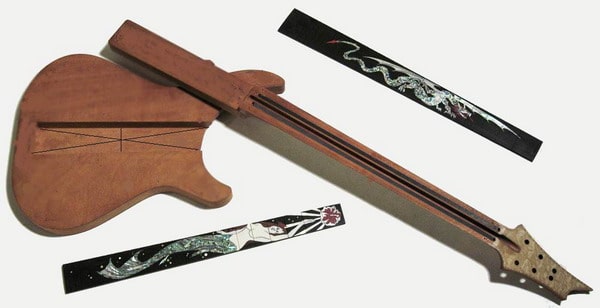
Set through neck joints are not as common, but are worth a brief mention.
This kind of joint sits between a set neck and a neck-through construction type.
Here, the neck inserts into a big pocket traversing almost the entire body. Almost is the keyword here. They usually don’t reach the furthest tip of the body.
That last thing would not make it a neck-through, though, since this kind of construction still relies on a pocket in the body. There is still body wood below the neck through all their overlap.
This kind of construction is way more complicated and very rare.
Its tonal aspects claimed are pretty similar to those of the set neck.
Neck-through
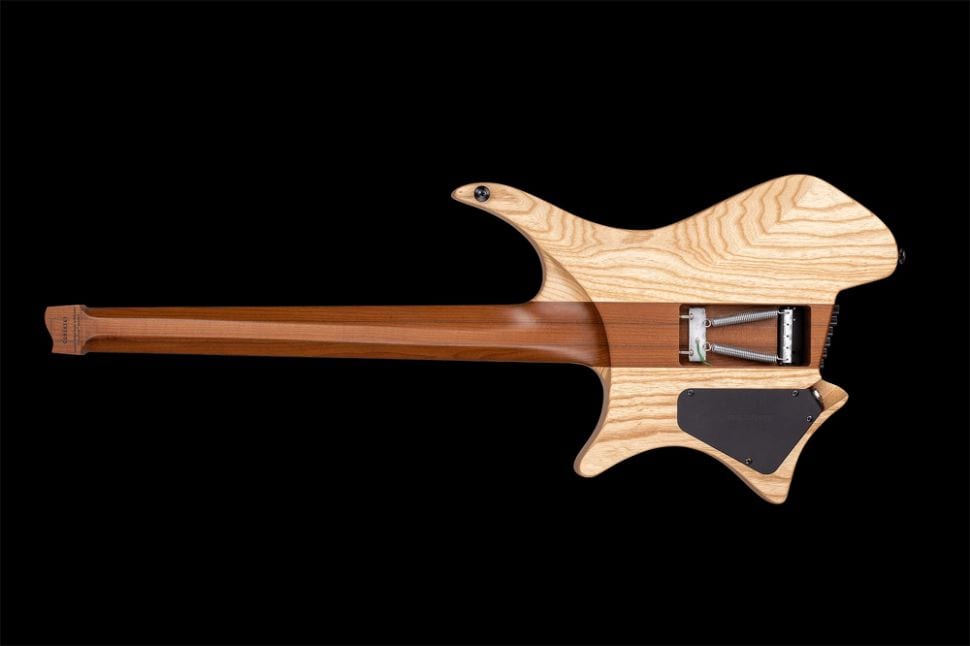
Neck-through neck joints are no such thing at all. You see, in this type of construction the neck and center of the body are just a single piece of wood to which, usually 2 wings are glued on the sides to complete the final body’s mass.
The claimed advantage of this construction is not having a joint at all, and then avoiding any sort of complication with the fit, which is known to be a critical factor for the instrument’s sound.
This construction type allows for seamless access to the higher frets and many players argue it is the most comfortable experience ever.
In terms of tone, the absence of a neck joint is perceived as the panacea of resonance and sustain, however, the study cited above outputs contrasting claims.
In terms of the “EQ” effect in sound, these instruments have completely different synergies of tonewoods, and will probably not sound like any other “traditionally” constructed one.
Does the number of screws in a bolt-on neck affect the guitar’s tone?
The number of screws in a bolt-on neck per se will not have any perceptible effect on tone. However, if a manufacturer decided it needed more screws to get a better fit of the joint, this will be a benefit. In cases such as 70s fender necks, the lack of a fourth screw could mean weaker fits.
However, everything is a matter of construction and a great builder will surely be able to generate an amazing fit without the need for an extravagant number of screws.
Do guitar neck shims affect tone?
Neck shims are supplements some players use in bolt-on guitars to alter the setup and action. The argument against them is that their presence would affect the fit of the neck joint and hence decrease resonance and sustain. However, this effect, if existent is pretty much imperceptible.
Conclusion and recommendations
Whether you are looking for a new guitar or planning on building or having one built, getting to know, at least at a high level how neck joints work is, in my opinion, something that will help you make a better informed final decision.
However, here in GearAficionado, I always say that you should try out every instrument before buying it if you have the chance.
I don’t think anyone can really understand the sound of all these different neck joints without getting to hear them live. At least try the ones that you think might work out better for you.
If it’s within your reach, try to get to play completely different guitars to clearly understand where the variation lies, and then start checking out ones closer to the one you preferred the most.
Finally, don’t forget to have fun. Technicalities for some people get the joy out of getting a new piece of gear. You don’t have to know it all about something that makes you smile. Just go and play the instrument that feels best to you.

Hello there, my name is Ramiro and I’ve been playing guitar for almost 20 years. I’m obsessed with everything gear-related and I thought it might be worth sharing it. From guitars, pedals, amps, and synths to studio gear and production tips, I hope you find what I post here useful, and I’ll try my best to keep it entertaining also.

